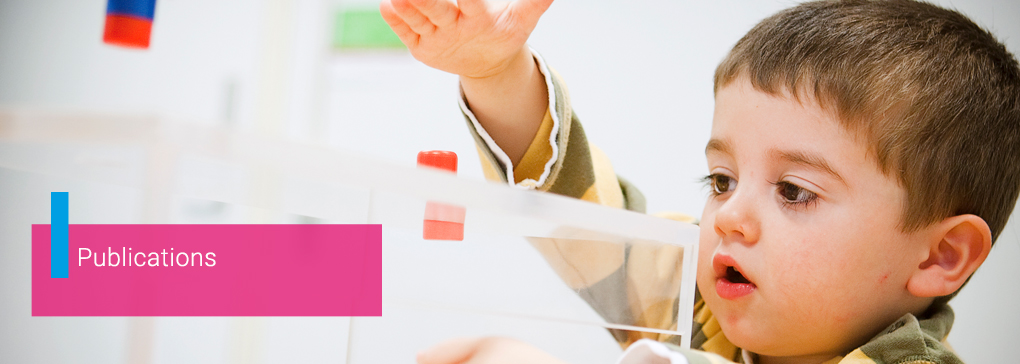
Go directly to the PhD Theses
2024 and in press
- Rutkowska, J. M., Ghilardi, T., Vacaru, S. V., van Schaik, J. E., Meyer, M., Hunnius, S., & Oostenveld, R. (in press). Optimal Processing of Surface Facial EMG to Identify Emotional Expressions: A Data-Driven Approach. Behavior Research Methods.
- Meyer, M., Brezack, N., & Woodward, A. L. (2024). Neural correlates involved in perspective-taking in early childhood. Developmental Cognitive Neuroscience, 66, 101366.
- Ward, E. K., Buitelaar, J. K., & Hunnius, S. (2024). Autistic and nonautistic adolescents do not differ in adaptation to gaze direction. Autism Research.
- Poli, F., O’Reilly, J. X., Mars, R. B., & Hunnius, S. (2024). Curiosity and the dynamics of optimal exploration. Trends in Cognitive Sciences.
- Ghilardi, T., Poli, F., Meyer, M., Colizoli, O., & Hunnius, S. (2024). Early roots of information-seeking: Infants predict and generalize the value of information. eLife, 13.
- Vacaru, S. V., van Schaik, J. E., Spiess, L., & Hunnius, S. (2024). No evidence for modulation of facial mimicry by attachment tendencies in adulthood: An EMG investigation. The Journal of Social Psychology, 164(1), 12-26.
- Belteki, Z., Ward, E., van den Boomen, C., Bölte, S., Buitelaar, J., Charman, T., … & Haman, E. (2024). Assessing language in infants with an elevated likelihood or diagnosis of autism: The association between parent-versus researcher-administered measures.
2023
- Poli, F., Ghilardi, T., Beijers, R., de Weerth, C., Hinne, M., Mars, R. B., & Hunnius, S. (2023). Individual differences in processing speed and curiosity explain infant habituation and dishabituation performance. Developmental Science, e13460.
- Poli, F., Ghilardi, T., Mars, R. B., Hinne, M., & Hunnius, S. (2023). Eight-month-old infants meta-learn by downweighting irrelevant evidence. Open Mind, 7, 141-155.
- Spit, S., Geambașu, A., Renswoude, D. V., Blom, E., Fikkert, P., Hunnius, S., … & Levelt, C. C. (2023). Robustness of the cognitive gains in 7‐month‐old bilingual infants: A close multi‐center replication of Kovács and Mehler (2009). Developmental Science, e13377.
- Rutar, D., Colizoli, O., Selen, L., Spieß, L., Kwisthout, J., & Hunnius, S. (2023). Differentiating between Bayesian parameter learning and structure learning based on behavioural and pupil measures. PloS one, 18(2), e0270619.
- Buzzell, G. A., Morales, S., Valadez, E. A., Hunnius, S., & Fox, N. A. (2023). Maximizing the potential of EEG as a developmental neuroscience tool. Developmental Cognitive Neuroscience, 101201.
- Ghilardi, T., Meyer, M., & Hunnius, S. (2023). Predictive motor activation: Modulated by expectancy or predictability?. Cognition, 231, 105324.
- Verhaar, E., Medendorp, W. P., Hunnius, S., & Stapel, J. C. (2023). Online reach correction in 6‐and 11‐month‐old infants. Infancy.
- Fico, K., Bussu, G., Tye, C., Krol, M. A., Buitelaar, J. K., & Hunnius, S. (2023). Are ERP responses to faces atypical in young children at elevated likelihood for autism apectrum disorder? A meta-analysis. International Society for Autism Research (INSAR).
- Geambasu, A., Spit, S., van Renswoude, D., Blom, E., Fikkert, P.J.P.M., Hunnius, S., Junge, C.C.M.M., Verhagen, J., Visser, I., Wijnen, Fl, Levelt, C.C. (2023). Robustness of the rule-learning effect in 7-month-old infants: A close, multicenter replication of Marcus et al. (1999). Developmental Science.
- Meyer, M., van Schaik, J. E., Poli, F., & Hunnius, S. (2023). How infant‐directed actions enhance infants’ attention, learning, and exploration: Evidence from EEG and computational modeling. Developmental Science, 26(1), e13259.
- Köster, M., & Meyer, M. (2023). Down and up! Does the mu rhythm index a gating mechanism in the developing motor system?. Developmental Cognitive Neuroscience, 101239.
- Colomer, M., Chung, H., Meyer, M., Debnath, R., Morales, S., Fox, N. A., & Woodward, A. (2023). Action experience in infancy predicts visual‐motor functional connectivity during action anticipation. Developmental Science, 26(3), e13339.
- Burke, N., Brezack, N., Meyer, M., & Woodward, A. (2023). Children’s social network size is related to their perspective-taking skills. Frontiers in Developmental Psychology, 1, 1221056.
- Gerson, S. A., Junge, C., & Meyer, M. (2023). Early social experience: impact on early and later social-cognitive development. Frontiers in Psychology, 14, 1268725.
2022
- Chung, H., Meyer, M., Debnath, R., Fox, N., & Woodward, A. (2022). Neural Correlates of Familiar and Unfamiliar Action in Infancy. Journal of Experimental Child Psychology.
- Immel, A. S., Altgassen, M., Meyer, M., Endedijk, H. M., & Hunnius, S. (2022). Self-projection in early childhood: No evidence for a common underpinning of episodic memory, episodic future thinking, theory of mind, and spatial navigation. Journal of Experimental Child Psychology, 223, 105481.
- Menn, K. H., Ward, E. K., Braukmann, R., Van den Boomen, C., Buitelaar, J., Hunnius, S., & Snijders, T. M. (2022). Neural tracking in infancy predicts language development in children with and without family history of autism. Neurobiology of Language, 3(3), 495-514.
- Schröer, L., Çetin, D., Vacaru, S. V., Addabbo, M., van Schaik, J. E., & Hunnius, S. (2022). Infants’ sensitivity to emotional expressions in actions: The contributions of parental expressivity and motor experience. Infant Behavior and Development, 68, 101751.
- Poli, F., Meyer, M., Mars, R. B., & Hunnius, S. (2022). Contributions of expected learning progress and perceptual novelty to curiosity-driven exploration. Cognition, 225, 105119.
- Hunnius, S. (2022). Early cognitive development: five lessons from infant learning. In Oxford Research Encyclopedia of Psychology.
2021
- Rutkowska, J.M., Meyer, M., & Hunnius, S. (2021). Adults do not distinguish action intentions based on movement kinematics presented in naturalistic settings. Brain Science, 11, 821.
- Meyer, M., & Hunnius, S. (2021). Neural processing of self-produced and externally generated events in 3-month-old infants. Journal of Experimental Child Psychology, 204, 105039.
- Ward, E.K., Braukmann, R., Weiland, R.F., Bekkering, H., Buitelaar, J.K., & Hunnius, S. (2021). Action predictability is reflected in beta power attenuation and predictive eye movements in adolescents with and without autism. Neuropsychologia, 157, 107859.
- Vacaru, S. V., van Schaik, J. E., Spiess, L., & Hunnius, S. (2021). No evidence for modulation of facial mimicry by attachment tendencies in adulthood: an EMG investigation. The Journal of Social Psychology, 1-15.
- Verhaar, E., Medendorp, W. P., Hunnius, S., & Stapel, J. C. (2021). Bayesian causal inference in visuotactile integration in children and adults. Developmental Science.
2020
- Addabbo, M., Vacaru, V.S., Meyer, M., & Hunnius, S. (2020). “Something in the way you move”: Infants are sensitive to emotions conveyed in action kinematics. Developmental Science, 23:e12873.
- Endedijk, H.M., Cillessen, A.H.N., Bekkering, H. & Hunnius, S. (2020). Cooperation and preference by peers in early childhood: A longitudinal study. Social Development, 29 (3), 854-870.
- Ghilardi, T., Meyer, M., Monroy, C. D., Gerson, S. A., & Hunnius, S. (Stage 1 Registered Report). Statistics in motion: Does the infant motor system predict actions based on their transitional probability? Developmental Science.
- Hunnius, S. & Meyer, M. (2020). (Eds.). New perspectives on early social-cognitive development [spec. iss.]. Progress in Brain Research, 254.
- Hunnius, S. & Meyer, M. (2020). Preface [to Special Issue: New perspectives on early social-cognitive development]. Progress in Brain Research, 254, xv-xvi.
- Meyer, M., Endedijk, H.M. & Hunnius, S. (2020). Intention to imitate: Top-down effects on 4-year-olds’ neural processing of others’ actions. Developmental Cognitive Neuroscience, 45:100851.
- Meyer, M. & Hunnius, S. (2020). Becoming better together: The early development of interpersonal coordination. Progress in Brain Research, 254, 187-204.
- Poli, F., Mars, R.B., Serino, G., & Hunnius, S. (2020). Infants tailor their attention to maximize learning. Science Advances, 6, eabb5053.
- Schreiner, M.S., van Schaik, J.E., Sucevic, J., Hunnius, S. & Meyer, M. (2020). Let’s talk action: Infant-directed speech facilitates infants’ action learning. Developmental Psychology, 56 (9), 1623-1631.
- van Schaik, J.E., Meyer, M., & Hunnius, S. (2020). Motion tracking of parents’ infant- versus adult-directed actions reveals general and action-specific modulations. Developmental Science, 23 :e12869.
- Vacaru, S. V., van Schaik, J. E., de Water, E., & Hunnius, S. (2020). Five-year-olds’ facial mimicry following social ostracism is modulated by attachment security. Plos one, 15(12), e0240680.
- Ward, E.K., Braukmann, R., Buitelaar, J.K. & Hunnius, S. (2020). No evidence for neural markers of gaze direction adaptation in 2-year-olds with high or low likelihood of autism. Journal of Abnormal Psychology, 129 (6), 612-623.
- Ward, E. K., & Hunnius, S. (Stage 1 Registered Report). Does variability in an implicit learning task help infants learn faster? A registered report. Developmental Science.
- Zaadnoordijk, L., Meyer, M., Zaharieva, M., Kemalasari, F., van Pelt, S., & Hunnius, S. (2020). From movement to action: An EEG study into the emerging sense of agency in early infancy. Developmental Cognitive Neuroscience, 42, 100760.
2019
- Jones, E., Mason, L., Begum Ali, J., van den Boomen, C., Braukmann, R., Cauvet, E., Demurie, E., Hessels, R., Ward, E., Hunnius, S., Bölte, S., Tomalski, P., Kemner, C., Warreyn, P., Roeyers, H., Buitelaar, J., Falck-Ytter, T., Charman, T., & Johnson, M (2019). Eurosibs: Towards robust measurement of infant neurocognitive predictors of autism across Europe. Infant Behavior and Development, 57, 101316.
- Kayhan, E., Heil, L., Kwisthout, J., van Rooij, I., Hunnius, S. & Bekkering, H. (2019). Young children integrate current observations, priors and agent information to predict others’ actions. PLOS One, 14: e02009.
- Kayhan, E., Hunnius, S., O’Reilly, J.X., & Bekkering, H. (2019). Infants differentially update their internal models of a dynamic environment. Cognition, 186, 139-146.
- Kayhan, E., Meyer, M., O’Reilly, J. X., Hunnius, S., & Bekkering, H. (2019). Nine-month-old infants update their predictive models of a changing environment. Developmental Cognitive Neuroscience, 38: 100680.
- Krause, F., Meyer, M., Bekkering, H., Hunnius, S., & Lindemann, O. (2019). Interaction between perceptual and motor magnitudes in early childhood. Cognitive Development, 49, 11-19.
- Meyer, M., Endedijk, H.M, van Ede, F., & Hunnius, S. (2019). Theta oscillations in 4-year-olds are sensitive to task engagement and task demands. Scientific Reports, 9:6049.
- Monroy, C.D., Gerson, S.A., Dominguez, E., Kaduk, K., Hunnius, S., & Reid, V. (2019). Sensitivity to structure in action sequences: An infant event-related potential study. Neuropsychologia, 126, 92-101.
- Monroy, C.D., Meyer, M., Schroer, L., Gerson, S.A., & Hunnius, S. (2019). The infant motor system predicts actions based on visual statistical learning. NeuroImage, 185, 947-954.
- Sacheli, L.M., Meyer, M., Hartstra, E., Bekkering, H., & Hunnius, S. (2019). How preschoolers and adults represent their joint action partner’s behavior. Psychological Research, 83, 863–877.
- Schutter, D.J.L.G., Hunnius, S., & Rommelse, N. (2019). Transcutaneous electric currents to target the peripheral and central nervous system in children with attention deficit hyperactivity disorder. Clinical Neurophysiology, 130, 2005-2007.
- Vacaru, V.S., van Schaik, J.E., & Hunnius, S. (2019). The modulation of facial mimicry by attachment tendencies and their underlying affiliation motives in 3-year-olds: An EMG study. PLOS ONE, 14(7), e0218676.
- Zaadnoordijk, L., Besold, T.R., & Hunnius, S. (2019). A match does not make a sense: On the sufficiency of the comparator model for explaining the sense of agency. Neuroscience of Consciousness, 1, niz006.
2018
- Braukmann, R., Lloyd-Fox, S., Blasi, A., Johnson, M.H., Bekkering, H., Buitelaar, J.K., & Hunnius, S. (2018). Diminished socially selective neural processing in 5-month-old infants at high familial risk for autism. European Journal of Neuroscience, 47, 720 – 728.
- Braukmann, R., Ward, E., Hessels, R.S., Bekkering, H., Buitelaar, J.K., & Hunnius, S. (2018). Action prediction in 10-month-old infants at high and low familial risk for Autism Spectrum Disorder. Research in Autism Spectrum Disorders, 49, 34-46.
- van Renswoude, D., Raijmakers, M., Koornneef, A., Johnson, S.P., Hunnius, S., & Visser, I. (2018). Gazepath: An eye-tracking analysis tool that accounts for individual differences and data quality. Behavior Research Methods, 50, 834-852.
- Zaadnoordijk, L., Otworowska, M., Kwisthout, J., & Hunnius, S. (2018). Can infants’ sense of agency be found in their behavior? Insights from babybot simulations of the mobile-paradigm. Cognition, 181, 58-64.
- Braukmann, R., Lloyd-Fox, S., Blasi, A., Johnson, M.H., Bekkering, H., Buitelaar, J.K., & Hunnius, S. (2018). Diminished socially selective neural processing in 5-month-old infants at high familial risk for autism. European Journal of Neuroscience, 47, 720 – 728.
- van Schaik, J.E. & Hunnius, S. (2018). Modulating mimicry: Exploring the roles of inhibitory control and social understanding in 5-year-olds’ behavioral mimicry. PLOS One, 13(3), e0194102.
- Hunnius, S. (2018). Action. In M.H. Bornstein, M.E. Arterberry, K. L. Fingerman, & J.E. Lansford (Eds), The SAGE Encyclopedia of Lifespan Human Development (pp. 21-22). Thousand Oaks, CA: SAGE.
- Monroy, C.D., Gerson, S.A., & Hunnius, S. (2018). Translating visual information into action predictions: Statistical learning in action and non-action contexts. Memory and Cognition, 46, 600-613.
2017
- Monroy, C.D., Gerson, S.A., & Hunnius, S. (2017). Infants’ motor proficiency and statistical learning for actions. Frontiers in Psychology, 8, 2174.
- Stapel, J.C., van Wijk, I.C., Bekkering, H. & Hunnius, S. (2017). Eighteen-month-old infants show distinct electrophysiological responses to their own faces. Developmental Science, 20, e12437.
- Braukmann, R., Bekkering, H., Hidding, M., Poljac, E., Buitelaar, J. & Hunnius, S. (2017). Predictability of action sub-steps modulates motor system activation during the observation of goal-directed actions. Neuropsychologia, 103, 44-53.
- Endedijk, H.M., Meyer, M., Bekkering, H., Cillessen, A.H.N., & Hunnius, S. (2017). Neural mirroring and social interaction: Motor system involvement during action observation relates to early peer cooperation. Developmental Cognitive Neuroscience, 24, 33-41.
- Gerson, S.A., Bekkering, H., & Hunnius, S. (2017). Do you do as I do? Young toddlers prefer and copy toy choices of similarly acting others. Infancy, 22, 5-22.
- Gerson, S.A., Meyer, M., Hunnius, S., & Bekkering, H. (2017). Unravelling the contributions of motor experience and conceptual knowledge in action perception: A training study. Scientific Reports, 7:46761.
- Monroy, C.D., Gerson, S.A., & Hunnius, S. (2017). Toddlers’ action prediction: Statistical learning of continuous action sequences. Journal of Experimental Child Psychology , 157, 14-28.
- Monroy, C.D., Meyer, M., Gerson, S.A., & Hunnius, S. (2017). Stati
- stical learning in social action contexts. PLOS ONE, 12(5), e0177261.
2016
- van Schaik, J.E. & Hunnius, S. (2016). Little chameleons: The development of social mimicry during early childhood. Journal of Experimental Child Psychology, 147, 71-81.
- Meyer, M., van der Wel, R.P.R.D., & Hunnius, S. (2016). Planning my actions to accommodate yours: Joint action development during early childhood. Philosophical Transactions of the Royal Society B, 371, 20150371.
- Meyer, M., Braukmann, R., Stapel, J.C., Bekkering, H., & Hunnius, S. (2016). Monitoring others’ errors: The role of the motor system in early childhood and adulthood. British Journal of Developmental Psychology, 34, 66–85.
- Stapel, J.C., Hunnius, S., Meyer, M., & Bekkering, H. (2016). Motor system contribution to action prediction: Temporal accuracy depends on motor experience. Cognition, 148, 71–78.
- Gerson, S.A., Bekkering, H., & Hunnius, S. (2016). Social context influences advance planning in three-year-olds. Cognitive Development, 40, 120-131. van Schaik, J.E., Endedijk, H.M., Stapel, J.C., & Hunnius, S. (2016). Young children’s motor interference is influenced by novel group membership. Frontiers in Psychology, 7, 00321.
- van Schaik, J.E., Endedijk, H.M., Stapel, J.C., & Hunnius, S. (2016). Young children’s motor interference is influenced by novel group membership. Frontiers in Psychology, 7, 00321.
2015
- Endedijk, H. M., Ramenzoni, V. C. O., Cox, R. F. A., Cillessen, A. H. N., Bekkering, H., & Hunnius, S. (2015). Development of interpersonal coordination between peers during a drumming task. Developmental Psychology, 51, 714-721.
- Gerson, S.A., Schiavio, A., Timmers, R., & Hunnius, S. (2015). Active drumming experience increases infants’ sensitivity to audiovisual synchrony during observed drumming actions. PLOS ONE, 10(6): e01.
- Gerson, S.A., Bekkering, H., & Hunnius, S. (2015). Short-term motor training, but not observational training, alters neurocognitive mechanisms of action processing in infancy. Journal of Cognitive Neuroscience, 27, 1207-1214.
- Dolscheid, S., Hunnius, S., & Majid, A. (2015). When high pitches sound low: Children’s acquisition of space-pitch metaphors. In D.C. Noelle, R. Dale, A.S. Warlaumont, J. Yoshimi, T. Matlock, C.D. Jennings, & P.P. Maglio (Eds.), Proceedings of the 37th Annual Meeting of the Cognitive Science Society (CogSci 2015) (pp. 584-598). Austin, TX: Cognitive Science Society.
- Endedijk, H.M., Cillessen, A.H.N., Cox, R.F.A., Bekkering, H., & Hunnius, S. (2015). The role of child characteristics and peer experiences in the development of peer cooperation. Social Development, 24, 521-540.
- Hitzert, M.M., van Geert, P.L.C., Hunnius, S., Van Braeckel, K.N.J.A., Bos, A.F., & Geuze, R.H. (2015). Associations between developmental trajectories of movement variety and visual attention in fullterm and preterm infants during the first six months postterm. Early Human Development, 91, 89-96.
- Meyer, M., Bekkering, H., Haartsen, R., Stapel, J.C., & Hunnius, S. (2015). The role of action prediction and inhibitory control for joint action coordination in toddlers. Journal of Experimental Child Psychology, 139, 203–220.
- Stapel, J.C., Hunnius, S., & Bekkering, H. (2015). Fifteen-month-old infants use velocity information to predict others’ action targets. Frontiers in Psychology, 6, 01092.
- Stapel, J.C., Hunnius, S., Bekkering, H., & Lindemann, O. (2015). The development of numerosity estimation: Evidence for a linear number representation early in life. Journal of Cognitive Psychology, 27, 400-412.
2014
- Dolscheid, S., Hunnius, S., Casasanto, D., & Majid, A. (2014). Prelinguistic infants are sensitive to space-pitch associations found across cultures. Psychological Science, 25, 1256-1261.
- Hunnius, S. & Bekkering, H. (2014). What are you doing? How active and observational experience shape infants’ action understanding. Philosophical Transactions of the Royal Society B, 369.
- Meyer, M., Bekkering, H., Janssen, D.J.C., de Bruijn, E.R.A., & Hunnius, S. (2014). Neural correlates of feedback processing in toddlers. Journal of Cognitive Neuroscience, 26, 1519-1520.
- Hitzert, M.M., Van Braeckel, K.N.J.A., Bos, A.F., Hunnius, S., & Geuze, R.H. (2014). Early visual attention in preterm and fullterm infants in relation to cognitive and motor outcomes at school age: an exploratory study. Frontiers in Pediatrics, 2, 16.
2013
- Paulus, M., Hunnius, S., & Bekkering, H. (2013). Neurocognitive mechanisms underlying social learning in infancy: Infants’ neural processing of the effects of others’ actions. Social Cognitive and Affective Neuroscience, 8, 774-779.
- Stolk, A., Hunnius, S., Bekkering, H., & Toni, I. (2013). Early social experience predicts referential communicative adjustments in five-year-old children. PLOS ONE, 8(8), e72667.
- Gerson, S. A., Hunnius, S. & Bekkering, H. (2013). Playing for us: The influence of joint action on planning in three-year-olds. In M. Knauff, M. Pauen, N. Sebanz, & I. Wachsmuth (Eds), Proceedings of the 35th Annual Conference of the Cognitive Science Society (pp. 2380-2385). Austin, TX: Cognitive Science Society.
- van Schaik, J.E., van Baaren, R., Bekkering, H., & Hunnius, S. (2013). Evidence for nonconscious behavior-copying in young children. In M. Knauff, M. Pauen, N. Sebanz, & I. Wachsmuth (Eds), Proceedings of the 35th Annual Conference of the Cognitive Science Society (pp. 1516-1521). Austin, TX: Cognitive Science Society.
- Meyer, M., van der Wel, R.P.R.D., & Hunnius, S. (2013). Higher-order action planning for individual and joint object manipulations. Experimental Brain Research, 225, 579-588.
- Paulus, M., Hunnius, S., & Bekkering, H. (2013). Examining functional mechanisms of imitative learning in infancy: Does teleological reasoning affect infants’ imitation beyond motor resonance?. Journal of Experimental Child Psychology, 116, 487–498.
2012
- Paulus, M., Hunnius, S., van Elk, M., & Bekkering, H. (2012). How learning to shake a rattle affects 8-month-old infants’ perception of the rattle’s sound: Electrophysiological evidence for action-effect binding in infancy. Developmental Cognitive Neuroscience, 2, 90-96.
- Dolscheid, S., Hunnius, S., Casasanto, D., & Majid, A. (2012). The sound of thickness: Prelinguistic infants’ associations of space and pitch. In N. Miyake, D. Peebles, & R. P. Cooper (Eds), CogSci 2012: Proceedings of the 34th Annual Meeting of the Cognitive Science Society (pp. 306-311). Austin, TX: Cognitive Science Society.
- Stapel, J.C., Hunnius, S., & Bekkering, H. (2012). Online prediction of others’ actions: the contribution of target object, action context, and movement kinematics. Psychological Research, 76, 434-445.
- van Dijk, M.W.G, Hunnius, S., & van Geert, P.L.C (2012). The dynamics of feeding during the introduction to solid food. Infant Behavior and Development, 35, 226-239.
2011
- Paulus, M., Hunnius, S., van Wijngaarden, C., Vrins, S., van Rooij, I., & Bekkering, H. (2011). The role of frequency information and teleological reasoning in infants’ and adults’ action prediction. Developmental Psychology, 47, 976-983.
- Paulus, M., Hunnius, S., Vissers, M., & Bekkering, H. (2011). Imitation in infancy: Rational or motor resonance? Child Development, 82, 1047-1057.
- Hunnius, S., de Wit, T.C.J., Vrins, S., & von Hofsten, C. (2011). Facing threat: Infants’ and adults’ visual scanning of faces with neutral, happy, sad, angry, and fearful emotional expressions. Cognition and Emotion, 25, 193-205.
- Meyer, M., Hunnius, S., van Elk, M., van Ede, F., & Bekkering, H. (2011). Joint action modulates motor system involvement during action observation in 3-year-olds. Experimental Brain Research, 211, 581-592.
- Paulus, M., Hunnius, S., & Bekkering, H. (2011). Can 14- to 20-month-old children learn that a tool serves multiple purposes? A developmental study on children’s action goal prediction. Vision Research, 51, 955-960.
- Paulus, M., Hunnius, S., Vissers, M., & Bekkering, H. (2011). Bridging the gap between the other and me: The functional role of motor resonance and action effects in infants’ imitation. Developmental Science, 14, 901-910.
- Paulus, M., van Dam, W., Hunnius, S., Lindemann, O., & Bekkering, H. (2011). Action-effect binding by observational learning. Psychonomic Bulletin & Review, 18, 1022-1028.
- Vrins, S., Hunnius, S., & van Lier, R. (2011). Volume completion in 4.5-month-old infants. Acta Psychologica, 138, 92-99.
2010
- Hunnius, S., & Bekkering, H. (2010). The early development of object knowledge: A study on infants’ visual anticipations during action observation. Developmental Psychology, 46, 446-454.
- Meyer, M., Bekkering, H., Paulus, M., & Hunnius, S. (2010). Joint action coordination in 2½- and 3-year-old children. Frontiers in Human Neuroscience, 4, 220.
- Stapel, J.C., Hunnius, S., van Elk, M., & Bekkering, H. (2010). Motor activation during observation of unusual versus ordinary actions in infancy. Social Neuroscience, 5, 451-460.
2009
- Hunnius, S., Bekkering, H., & Cillessen, A.H.N. (2009). The association between intention understanding and peer cooperation in toddlers. European Journal of Developmental Science, 3, 368–388.
- van Dijk, M.W.G., Hunnius, S., & van Geert, P.L.C. (2009). Variability in eating behavior throughout the weaning period. Appetite, 52, 766-770.
2008
- van Elk, M., van Schie, H.T., Hunnius, S., Vesper, C., & Bekkering, H. (2008). You’ll never crawl alone: Neurophysiological evidence for experience-dependent motor resonance in infancy. Neuroimage, 43, 808-814.
- Hunnius, S., Geuze, R.H., Zweens, M.J., & Bos, A.F. (2008). Effects of preterm experience on the developing visual system: A longitudinal study of shifts of attention and gaze in early infancy. Developmental Neuropsychology, 33, 1-15
2007
- Hunnius, S. (2007). The early development of visual attention and its implications for social and cognitive development. Progress in Brain Research, 164, 187-209. [fulltext]
2006
- Hunnius, S., Geuze, R.H., & van Geert, P.L.C. (2006). Associations between the developmental trajectories of visual scanning and disengagement of attention in infants. Infant Behavior and Development, 29, 108-125.
2004
- Hunnius, S., Geuze, R.H., & van Geert, P.L.C. (2006). Associations between the developmental
- Hunnius, S., & Geuze, R.H. (2004). Gaze shifting in infancy: A longitudinal study using dynamic faces and abstract stimuli. Infant Behavior and Development, 27, 397-416. [pdf]
- Hunnius, S., & Geuze, R.H. (2004). Developmental changes in visual scanning of dynamic faces and abstract stimuli in infants: A longitudinal study. Infancy, 6, 231-255. [pdf]
PhD Theses

Emma K. Ward: Predictive Processing accounts of autism and early development
2021 [pdf]
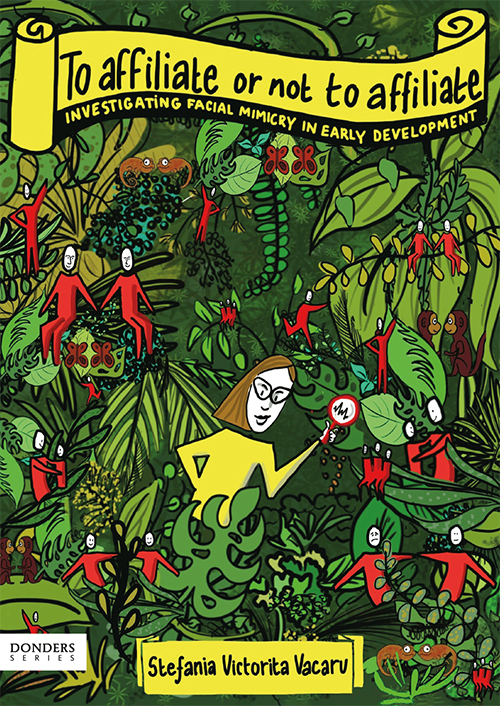
Stefania Vacaru: To affiliate or not to affiliate: Investigating facial mimicry in early development
2021 [pdf]
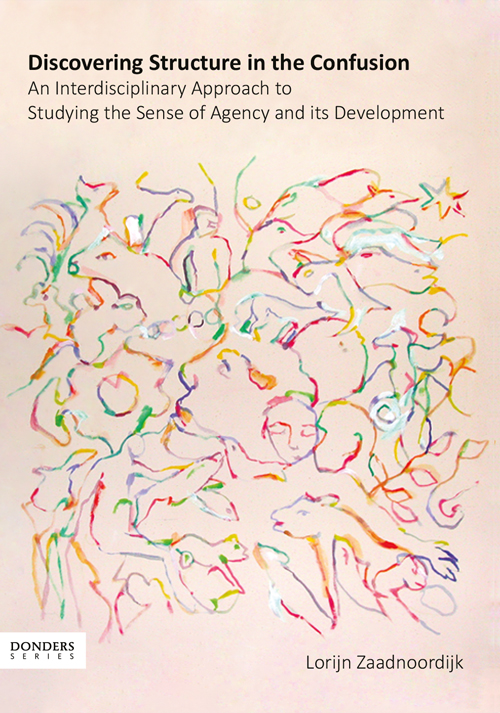
Lorijn Zaadnoordijk: Discovering structure in the confusion: An interdisciplinary approach to studying the sense of agency and its development (awarded cum laude, VNOP Dissertation Award)
2020 [pdf]
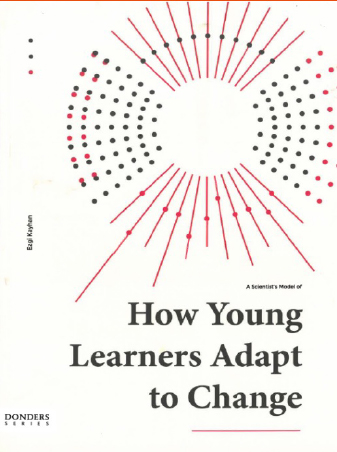
Ezgi Kayhan: How young learners adapt to change
2018 [pdf]
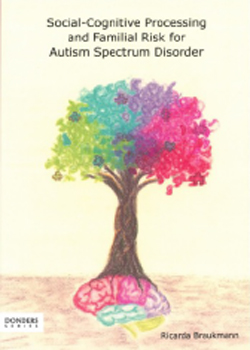
Ricarda Braukmann: Social-cognitive processing and familial risk for Autism Spectrum Disorder
2018 [pdf]
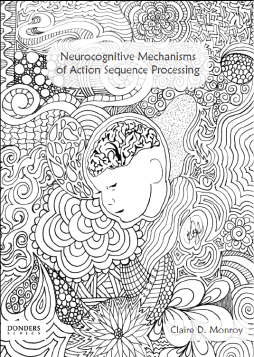
Claire Monroy: Neurocognitive mechanisms of action sequence processing
2017 [pdf]
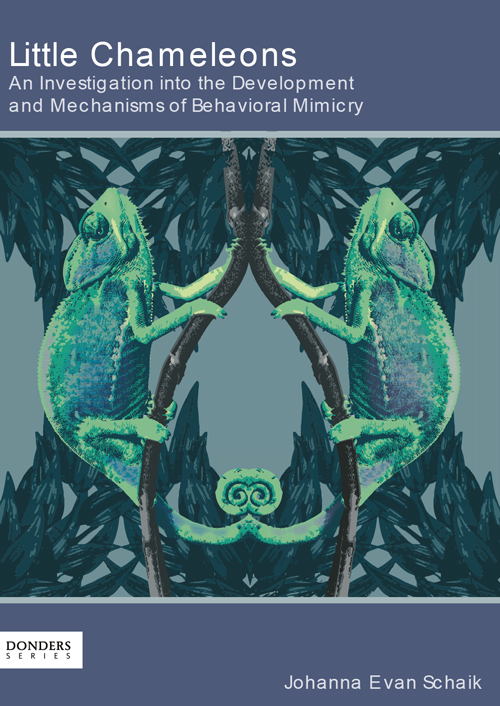
Johanna van Schaik: Little chameleons: An investigation into the development and mechanisms of behavioral mimicry
2017 [pdf]
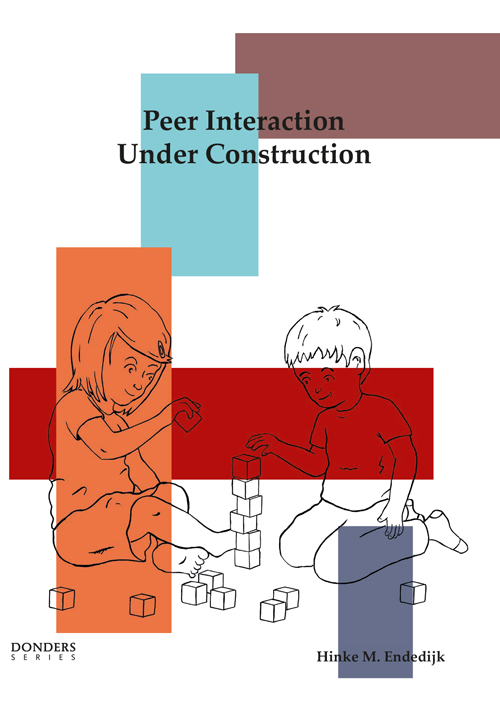
Hinke Endedijk: Peer Interaction Under Construction
2017 [pdf]
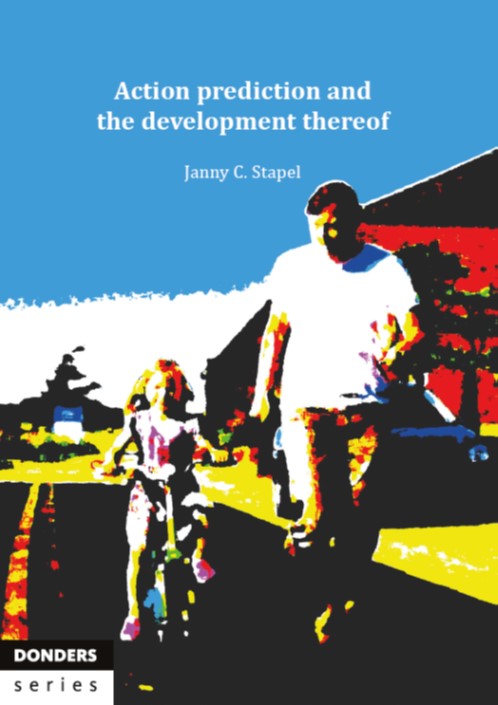
Janny Stapel: Action prediction and the development thereof
2015 [pdf]
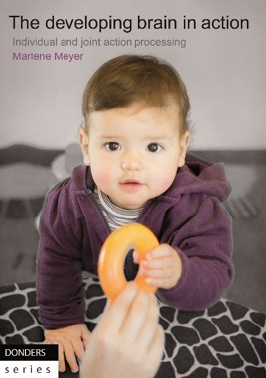
Marlene Meyer: The developing brain in action. Individual and joint action processing (VNOP Dissertation Award)
2014 [pdf]
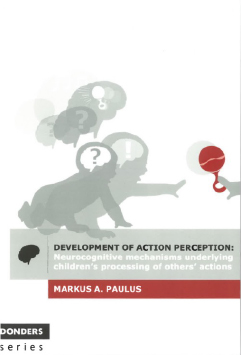
Markus Paulus: Development of action perception: Neurocognitive mechanisms underlying children’s processing of others’ actions (awarded cum laude, George Butterworth Young Scientist Award)
2011 [pdf]
